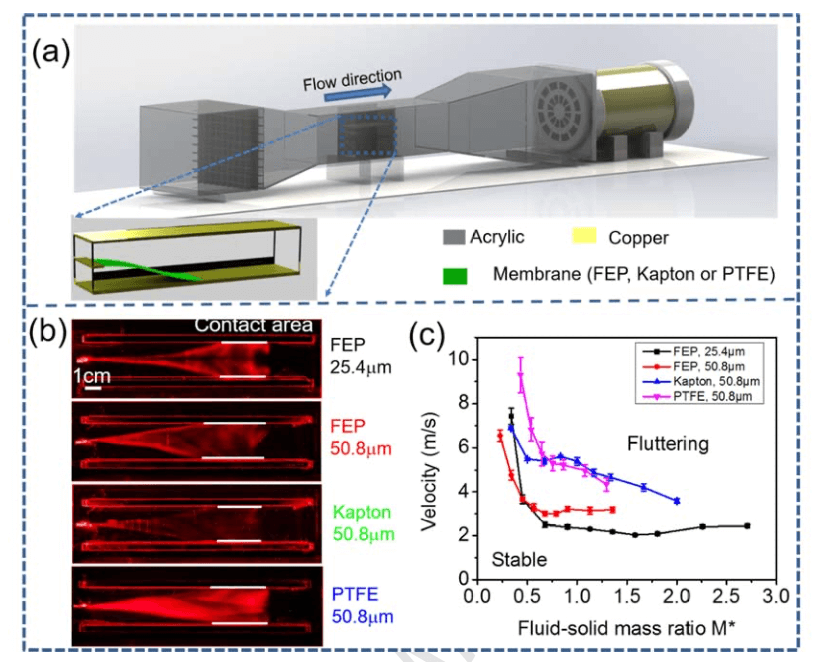Abstract
With the development of internet of things and sensor networks, self-powered sensors are highly desirable. In this study, we present a simple but practical design of an aeroelastic flutter based triboelectric nanogenerator (AF-TENG) that could harvest energy from wind and serve as an active wind speed sensor. The fabricated AF-TENG consists of two copper layers and a membrane in a cuboid acrylic channel. The effect of membrane materials, including fluorinated ethylene propylene (FEP), polytetrafluoroethylene (PTFE) and Kapton (PI), length of membrane, inlet wind speed and humidity on the performance of AF-TENG have been systematically investigated. As wind flows through a designed channel, the membrane moves up and down between copper surfaces periodically, which results in a periodic electrical output signals of the AF-TENG. The corresponding frequency of the AF-TENG signal is found to increase in a robust linear relationship with the wind speed. Interestingly, as environmental humidity increases, the amplitude of voltage and current output of the AF-TENG deceases dramatically, while the frequency of the output remains the same due to high humidity can decrease the charge density on the membrane surface but have no effect on the fluttering motion of the membrane. The real-time wind speed measured through analyzing frequency of the voltage output of the AF-TENG agrees well with a commercial wind speed sensor, and the corresponding speed sensitivity is about 0.13 (m/s)/Hz or 7.7 Hz/(m/s). Therefore, the fabricated self-powered AF-TENG has shown potential applications in wireless environmental monitoring networks, even in high humidity environment.

